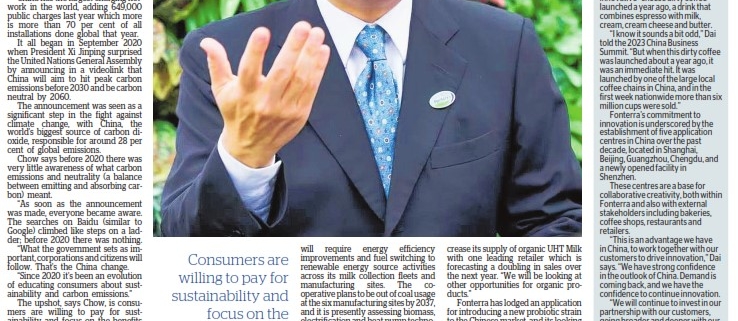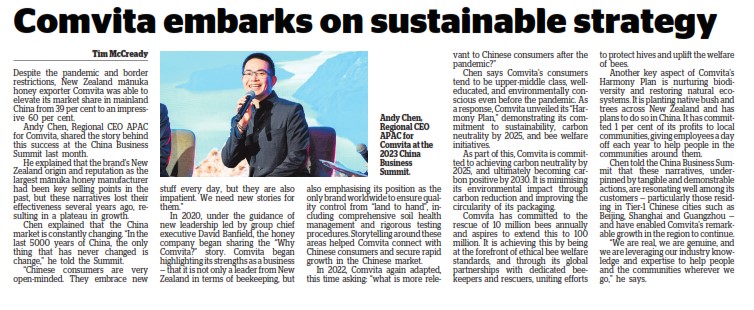Agribusiness & Trade: Evolving to rapidly changing consumer preferences
Agribusiness & Trade: Evolving to rapidly changing consumer preferences
Fonterra’s vice-president of food service for Greater China Justin Dai, says the $2 billion food service business the global dairy giant operates in China is evolving to keep ahead of rapidly changing consumer preferences.
Fonterra’s focus on localisation and innovation and the fusion of dairy goodness with local preferences in China has been a pillar of its success.
An example of this is the innovative “cheese dirty coffee” launched a year ago, a drink that combines espresso with milk, cream, cream cheese and butter.
“I know it sounds a bit odd,” Dai told the 2023 China Business Summit. “But when this dirty coffee was launched about a year ago, it was an immediate hit. It was launched by one of the large local coffee chains in China, and in the first week nationwide more than six million cups were sold.”
Fonterra’s commitment to innovation is underscored by the establishment of five application centres in China over the past decade, in Shanghai, Beijing, Guangzhou, Chengdu and a newly opened facility in Shenzhen.
The centres are a base for collaborative creativity, both within Fonterra and also with external stakeholders including bakeries, coffee shops, restaurants and retailers.
“This is an advantage we have in China, to work together with our customers to drive innovation,” Dai says. “We have strong confidence in the outlook of China. Demand is coming back, and we have the confidence to continue innovation.
“We will continue to invest in our partnership with our customers, going broader and deeper with our partners to continue to bring the goodness of New Zealand dairy into Chinese consumers’ recipes.”
Through Anchor Food Professionals, Fonterra serves four major channels within China’s food service market: bakery, beverage, dining and the rapidly growing retail food service sector. Its reach spans over 470 cities, including all tier one and tier two cities, along with hundreds of tier three and tier four cities, in partnership with its authorised Anchor distributors.
Key trends shaping the market:
● Gen-Z’s affinity for traditional Chinese pastries infused with dairy is creating new culinary opportunities.
● Social media’s pervasive influence is revolutionising buying behaviour, prompting an intense marketing arms race.
● The interplay between premium and mass markets is intensifying competition and redefining strategies.
● Fast, bold innovation is blurring channel boundaries and redefining the industry.
● The shift towards varied dining occasions, encompassing online, offline and food service retail, is altering consumption habits.
● Niche brands and the untapped potential of lower-tier cities present vast growth opportunities.




